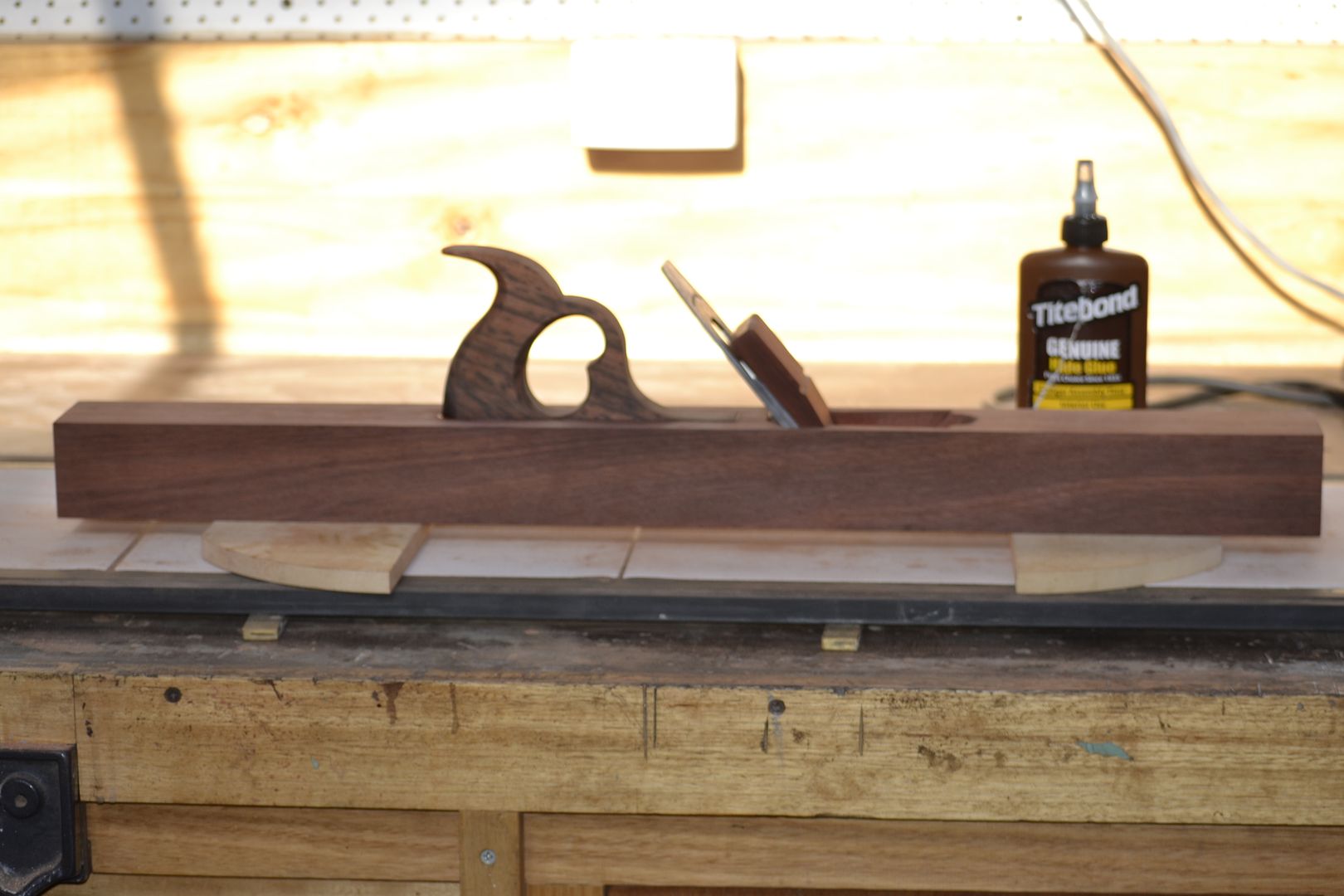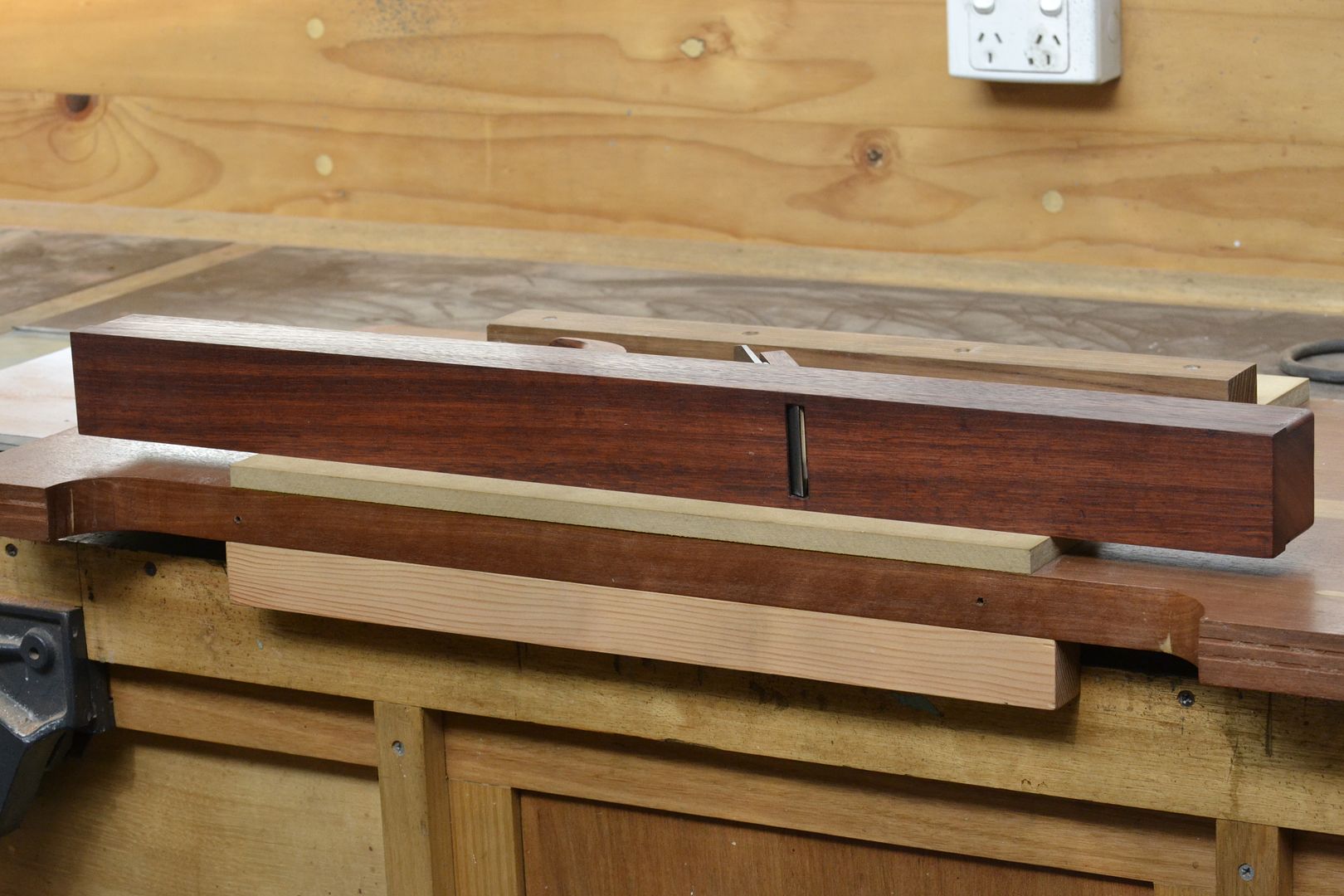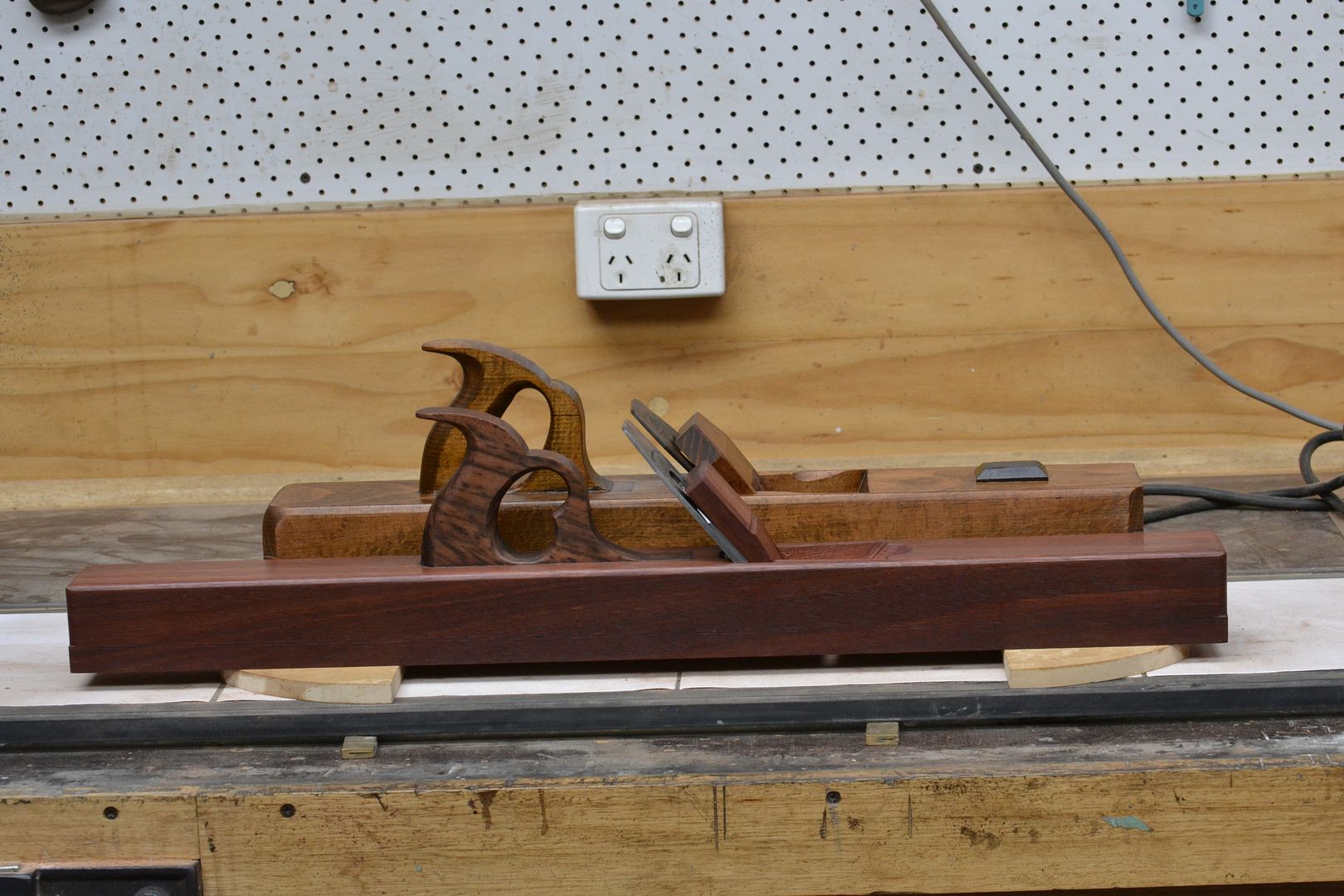richarnold":iya17qr0 said:
Pete Maddex":iya17qr0 said:
I have noticed on a couple of planes the tote mortice was undercut at the back of the socket so and the tote shaped to fit, you had to insert the heel first.
I guess it would help keep it in place.
Pete
Hi Pete. I have noticed this myself when fitting them. I always have to tuck the heel in first. I think it's something to do with the curvature of the tote. I've seen some makers cut the tenon off square at the back to make fitting easier, but I think this may make the tote more inclined to come loose.
I know it's seen as not being historically accurate, but I like to drive a standard #12 2" long brass screw through the front of a plane handle after waxing the threads and pre-drilling. It makes it so that it's possible for the glue joint in a handle to come loose and jiggle a little bit, but it's not possible for for the handle to come out.
Before I started building planes, I went through a rash of about 10 old try planes trying various things until I could find exactly what I wanted. Probably half of them hadn't been used for a while, and in using the planes to dimension wood, I worked the handles out. It ran through my head (and others I'm sure) that the worst thing that could happen would be for the handle to come loose in the middle of a brisk forward stroke. However, with any handle that is straight up and down or not or whatever else, it isn't possible to get the handle to come out on a forward stroke unless it's horribly fitted. To do that, a leg of a triangle would have to turn into the hypotenuse. Plus, pushing a plane forward puts downward force on the front of the handle, and potentially upward on the back (same hypotenuse thing). Or in short, the 5 or half a dozen handles that came out never came out in a forward stroke.
There is, though, a chance that you'll pick up a plane with a loose handle and have the entire plane fall away from it. The thing that breaks when wooden planes are dropped is the handle, and you'd still be holding that. Everything else just takes on a dent when it hits the floor.
I undercut my sockets, but if I had accurate machine tools, I wouldn't have to do that as much. I usually cut them entirely by hand without drilling anything, so a little bias makes things nice - and gives a little wiggle room when cutting the slanted ramp at the front.
Not that any of us will probably have to worry much about handles on our planes. When they're well fitted, coming loose at all is probably decades away.
What I'm slowly getting at is that the discussion that ensues sometimes about the ramp or lack of it or undercutting or lack of it really doesn't have much functional impact as far as I can tell. None of the variations will actually get us hurt.














































